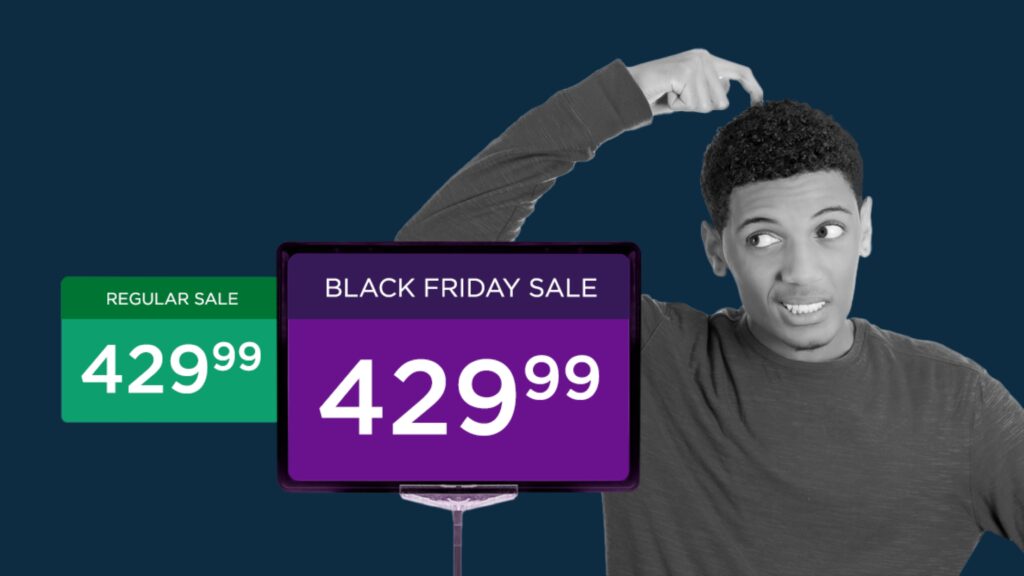What Is TVOD? Transactional Video on Demand, Explained
by Cat Hausler
8 Min Read
MNTN is the Hardest Working Software in Television. Get started today. Be on TV tomorrow.Learn More
A “laissez-faire, ho-hum” holiday shopping season signals changing tides in 2024 as shoppers get savvier, with sustained spending during Q4

4 Min Read
The Black Friday buzz may have died down, but for hawkeyed advertisers, the holiday shopping season isn’t just one of the biggest sales opportunities of the year; it also provides valuable insights on overall shopping trends and customer behavior that can guide decisions about how they might need to shift gears in the new year. Take this year, for example: according to Reuters, foot traffic increased by 2% on Black Friday 2023. While analysts cited high interest rates and increased credit card debt as the culprits for a more subdued Black Friday than usual, Eric Matisoff, an analytics and data science expert at Adobe, suggested that shoppers may have already done their holiday shopping as early as October and November.
What can advertisers glean from this? We took stock of some of the early shopping data that came in from the Black Friday weekend, and what it all means for advertisers as we move into 2024.
Shoppers are getting savvier this year — could this be the reason why foot traffic flattened? At least one TikToker’s video went viral when it revealed Target’s regular and sale prices being the same during Black Friday and previous promotional periods, causing a reaction among shoppers. With social media being the new “word of mouth,” retailers simply cannot afford to nickel-and-dime their shoppers.
However, customer skepticism was not enough to detract shoppers from spending — it just seems they did it online this year. (Although it’s worth noting the same price-bamboozling happened there, too.) Adobe Analytics, which tracks US online shopping, reported a record $9.8 billion in Black Friday sales, up 7.5% from 2022. Phones were the device du jour for browsing and buying, with mobile purchases making up $5.3 billion of total sales. Adobe predicts that smartphone purchases will have outperformed desktop for the first time, which suggests that advertisers will need to tailor their advertising efforts with mobile in mind.
“Retailers were much more aggressive in the online space,” said Marshal Cohen, Chief Retail Adviser at Circana, a customer behavioral research firm. “Shopping was prominent in stores, but not necessarily purchasing.” He noted that one reason for the slump may have been a drop in “self-gifting”: “It’s really important to get that in-store impulse shopping. It didn’t happen Black Friday or Saturday. Stores were moderately busy, by 10 a.m. saw a lot of traffic, but not a lot of purchasing. Consumers were figuring out what to do for the holiday. Online was definitely more promotional.”
With in-store traffic (and queues) flattening, shoppers lining up outside their favorite retailers at 11 PM on Thanksgiving are starting to feel like a thing of the past. This year, they could wait for retailers to come to them, rather than the other way around. And while early predictions are looking strong, Cohen says that advertisers and brands can’t rest on their laurels as we head into the home stretch of the year.
“You can’t read into a Black Friday weekend,” he told WWD. “Retailers will get very nervous in the next two weeks when it gets very quiet. Then the frenzy starts. 12% of consumers say they will shop later. Consumers don’t have a sense of urgency. Inventories are not low. There’s plenty of stuff. It’s a laissez-faire, ho-hum Christmas.” With so much choice and promotional deals (real or otherwise) cluttering our screens, it’s going to take a lot more effort to get in front of shoppers as the holiday shopping season evolves.
This ever-changing shopper landscape means that a performance mindset is crucial to keeping up with — and addressing — customer sentiment. (A faux Black Friday deal may work for a while, but if you know the social media grapevine is factoring into their choices, you’ll be able to see the signs in your data before they go to your competitors.) As clued-in shoppers start their holiday shopping throughout Q4, advertisers have to prepare themselves to sustain their interest through each holiday tentpole. Agility in creative production — and adtech that is proactive as much as it is reactive — will be essential. Connected TV platforms like MNTN cover all bases by supplying real-time data during the holiday season, and meet the customers at each of their touchpoints, no matter where they may be in their journey.
Other CTV News You Need to Know: